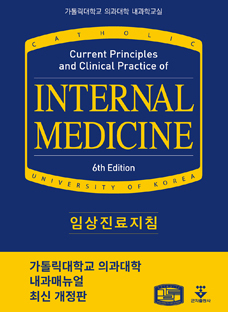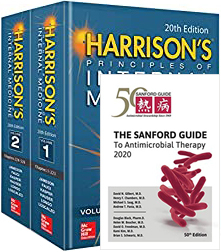A. NONNEOPLASTIC DISEASE OF THE PROSTATE
1. Anatomy and Histology of the Prostate
2. Seminal Vesicle/Ejaculatory Duct
3. Cowper Gland
4. Benign Prostatic Hyperplasia
5. Acute Inflammation of the Prostate
6. Chronic Inflammation of the Prostate
7. Nonspecific Granulomatous Prostatitis
8. Post-Biopsy Granuloma
9. Prostatic Xanthoma
10. Granulomatous Prostatitis of Infectious Etiology
11. Simple Atrophy
12. Cystic Atrophy
13. Postatrophy Hyperplasia
14. Partial Atrophy
15. Adenosis
16. Sclerosing Adenosis
17. Clear Cell Cribriform Hyperplasia
18. Hyperplasia of Mesonephric Remnants
19. Basal Cell Hyperplasia
20. Urothelial Metaplasia
21. Squamous Metaplasia
22. Mucin Cell Metaplasia
23. Neuroendocrine Cells Involving the Prostate
24. Verumontanum Mucosal Gland Hyperplasia
25. Prostatic Infarct
B. NEOPLASTIC DISEASE OF THE PROSTATE
26. High-Grade Prostatic Intraepithelial Neoplasia (HGPIN)
27. Intraductal Carcinoma of the Prostate
28. Prostatic Carcinoma, Usual Variant
29. Prostatic Carcinoma, Atrophic Variant
30. Prostatic Carcinoma, Foamy Gland Variant
31. Prostatic Carcinoma, Pseudohyperplastic Variant
32. Prostatic Carcinoma, Mucinous Variant
33. Prostatic Carcinoma, Microcystic Variant
34. Prostatic Intraepithelial Neoplasia (PIN)-Like Adenocarcinoma
35. Sarcomatoid Carcinoma
36. Pleomorphic Giant Cell Carcinoma of the Prostate
37. Lymphoepithelioma-Like Carcinoma of the Prostate
38. Prostate Carcinoma with Squamous Differentiation
39. Ductal Adenocarcinoma
40. Prostatic Adenocarcinoma with Neuroendocrine Differentiation
41. Well-Differentiated Neuroendocrine Tumor
42. Small Cell Carcinoma, Prostate
43. Prostatic Basal Cell Adenoma
44. Basal Cell Carcinoma of the Prostate
45. Squamous Neoplasms Including Squamous Cell and Adenosquamous Carcinoma
46. Urothelial Carcinoma
47. Prostatic Stromal Tumors of Uncertain Malignant Potential
48. Prostatic Stromal Sarcoma
49. Atypical Glands Suspicious for Prostatic Carcinoma
50. High-Grade Prostatic Intraepithelial Neoplasia with Adjacent Atypical Glands
51. Radiation-Induced Changes
52. Hormonal Ablation-Induced Changes
53. Cryoablation Therapy-Induced Changes
54. Immunohistochemical Work-Up of Prostate Carcinoma
55. Gleason Grading of Prostate Carcinoma
56. Prostate Cancer Staging in Radical Prostatectomy
57. Genetics and Genomics in Prostate Cancer
58. Work-Up of "Vanishing Cancer in Radical Prostatectomy
59. Nonprostatic Adenocarcinoma Involving the Prostate
C. SEMINAL VESICLES
60. Anatomy and Histology of Seminal Vesicles
61. Amyloidosis
62. Seminal Vesicle Adenocarcinoma
63. Mixed Epithelial and Stromal Tumor
D. NONNEOPLASTIC DISEASE OF THE URINARY BLADDER
64. Anatomy and Histology of the Urinary Bladder
65. von Brunn Nests
66. Cystitis Cystica et Glandularis
67. Squamous Metaplasia
68. Intestinal Metaplasia
69. Nephrogenic Metaplasia/Adenoma
70. Polypoid and Papillary Cystitis
71. Follicular Cystitis
72. Giant Cell Cystitis
73. Interstitial Cystitis/Painful Bladder Syndrome
74. Eosinophilic Cystitis
75. Infectious Cystitis
76. Malakoplakia
77. Granulomatous Cystitis After BCG
78. Radiation Cystitis
79. Chemotherapy-Induced Cystitis
80. Endometriosis of the Bladder
81. Bladder Endocervicosis
82. Bladder Exstrophy
83. Urachal Anomaly
84. Bladder Diverticulum
85. Ectopic Prostate Tissue
E. NEOPLASTIC DISEASE OF THE URINARY BLADDER
86. Urothelial Proliferation of Uncertain Malignant Potential
87. Reactive Urothelial Atypia
88. Urothelial Atypia of Unknown Significance
89. Urothelial Dysplasia
90. Urothelial Carcinoma In Situ
91. Urothelial Papilloma
92. Inverted Papilloma
93. Papillary Urothelial Neoplasm of Low Malignant Potential
94. Low-Grade Papillary Urothelial Carcinoma
95. High-Grade Papillary Urothelial Carcinoma
96. Invasive Urothelial Carcinoma
97. Urothelial Carcinoma with Inverted Growth Pattern
98. Urothelial Carcinoma with Squamous Differentiation
99. Urothelial Carcinoma with Villoglandular Differentiation
100. Urothelial Carcinoma, Plasmacytoid Variant
101. Urothelial Carcinoma, Nested Variant
102. Urothelial Carcinoma, Micropapillary Variant
103. Urothelial Carcinoma, Microcystic Variant
104. Urothelial Carcinoma, Lymphoepithelioma- Like Carcinoma Variant
105. Urothelial Carcinoma, Clear Cell (Glycogen-Rich) Variant
106. Lipid-Rich Urothelial Carcinoma
107. Urothelial Carcinoma, Giant Cell Variant
108. Urothelial Carcinoma with Syncytiotrophoblastic Giant Cells
109. Urothelial Carcinoma with Rhabdoid Differentiation
110. Urothelial Carcinoma Similar to Giant Cell Tumor of Bone
111. Undifferentiated Urothelial Carcinomas
112. Small Cell Carcinoma of the Urinary Bladder
113. Urothelial Carcinoma with Unusual Stromal Reactions
114. Urothelial Carcinoma with Sarcomatoid Differentiation
115. Villous Adenoma
116. Adenocarcinoma
117. Clear Cell Adenocarcinoma
118. Urachal Adenocarcinoma
119. Squamous Cell Carcinoma
120. Paraganglioma
121. Staging of Urothelial Carcinoma of the Urinary Bladder and Urethra
122. Molecular Genomics of Bladder Cancer
123. Secondary Spread of Prostate Carcinoma to the Bladder
124. Secondary Adenocarcinoma Involving the Bladder, Other than Prostatic Carcinoma
F. NONNEOPLASTIC DISEASE OF THE KIDNEY
125. Anatomy of the Kidney
126. Renal Dysplasia
127. Localized Cystic Disease of the Kidney
128. Autosomal Recessive Polycystic Kidney Disease
129. Autosomal Dominant Polycystic Kidney Disease
130. Medullary Sponge Kidney
131. Acquired Cystic Renal Disease
132. Simple Cortical Cyst
133. Acute Pyelonephritis
134. Chronic Nonobstructive Pyelonephritis
135. Chronic Obstructive Pyelonephritis
136. Xanthogranulomatous Pyelonephritis
137. Renal Papillary Necrosis
138. Benign Nephrosclerosis
139. Malignant Nephrosclerosis
140. Acute Kidney Injury (Acute Tubular Necrosis)
141. Acute Interstitial Nephritis
142. Infectious Interstitial Nephritis
G. NEOPLASTIC DISEASE OF THE KIDNEY
143. Papillary Adenoma
144. Renal Oncocytoma
145. Clear Cell Renal Cell Carcinoma
146. Multilocular Cystic Renal Neoplasm of Low Malignant Potential
147. Papillary Renal Cell Carcinoma
148. Chromophobe Renal Cell Carcinoma
149. Fumarate Hydratase-Deficient Renal Cell Carcinoma, Including Hereditary Leiomyomatosis and Renal Cell Carcinoma Syndrome
150. Collecting Duct Carcinoma
151. Renal Medullary Carcinoma
152. MIT Family Translocation Renal Cell Carcinoma
153. Succinate Dehydrogenase-Deficient Renal Cell Carcinoma
154. Mucinous Tubular and Spindle Cell Carcinoma
155. Tubulocystic Carcinoma
156. Acquired Cystic Kidney Disease-Associated Renal Cell Carcinoma
157. Thyroid-Like Follicular Renal Cell Carcinoma
158. Clear Cell Papillary Renal Cell Carcinoma
159. Renal Cell Carcinoma with Fibromyomatous Stroma
160. Eosinophilic Solid Cystic Renal Cell Carcinoma
161. Renal Cell Carcinoma with Somatic Mutations in TSC/mTORC1 Genes
162. Renal Cell Carcinoma with Sarcomatoid Differentiation
163. Renal Cell Carcinoma, Unclassified Type
164. Grading System for Renal Cell Carcinoma
165. Staging of Renal Cell Carcinoma
166. Renal Cell Carcinoma in von Hippel-Lindau Disease
167. Renal Cell Neoplasms in Birt-Hogg-Dubé (BHD) Syndrome
168. Renal Tumors in Tuberous Sclerosis Complex (TSC)
169. Metanephric Adenoma
170. Metanephric Stromal Tumor
171. Wilms Tumor
172. Nephrogenic Rests and Nephroblastomatosis
173. Congenital Mesoblastic Nephroma (CMN)
174. Rhabdoid Tumor of the Kidney
175. Clear Cell Sarcoma of the Kidney
176. Ossifying Renal Tumor of Infancy
177. Renal Angiomyolipoma
178. Epithelioid Angiomyolipoma
179. Juxtaglomerular Cell Tumor
180. Renal Medullary Fibroma (Renomedullary Interstitial Cell Tumor)
181. Mixed Epithelial and Stromal Tumor Family
182. Primary Renal Synovial Sarcoma
183. Renal Carcinoid Tumor
H. RENAL PELVIS AND URETER
184. Ureteropelvic Junction Obstruction
185. Idiopathic Retroperitoneal Fibrosis, Including IgG4-Related Disease
186. Fibroepithelial Polyp of the Ureter and Renal Pelvis
187. Ureteral Urothelial Carcinoma and Staging
188. Staging for Pelvic Urothelial Carcinoma
I. NONNEOPLASTIC DISEASE OF THE TESTIS
189. Testis: Anatomy and Histology
190. Cryptorchidism
191. Testiculosplenic Fusion
192. Adrenal Cortical Rests
193. Spermatic Cord Torsion and Testicular Infarction
194. Testicular Microlithiasis
195. Vasculitis
196. Male Infertility Workup
197. Maturation Arrest
198. Hypospermatogenesis
199. Germ Cell Aplasia, Sertoli Cell-only Syndrome
200. Excurrent Duct Obstruction
201. Pre-pubertal Gonadotropin Deficiency
202. Postpubertal Gonadotrophin Deficiency
203. Viral Orchitis
204. Granulomatous Orchiepididymitis
205. Nonspecific Granulomatous Orchitis
206. Androgen Insensitivity Syndrome
207. Klinefelter Syndrome
208. Testicular Tumor of the Adrenogenital Syndrome
209. Embryonic Testicular Regression (Vanishing Testis Syndrome)
210. Gonadal Dysgenesis
J. NEOPLASTIC DISEASE OF THE TESTIS
211. Germ Cell Neoplasia In Situ
212. Specific Forms of Intratubular Germ Cell Neoplasia
213. Seminoma
214. Embryonal Carcinoma
215. Postpubertal-Type Yolk Sac Tumor
216. Postpubertal-Type Teratoma
217. Mixed Germ Cell Tumor
218. Teratoma with Somatic-Type Malignancies
219. Choriocarcinoma
220. Non-Choriocarcinomatous Trophoblastic Tumors
221. Regressed Germ Cell Tumors
222. Spermatocytic Tumor
223. Prepubertal-Type Teratoma, Testicular Carcinoid Tumor
224. Teratoma, Prepubertal-Type, Dermoid Cyst
225. Prepubertal Teratoma, Epidermoid Cyst
226. Yolk Sac Tumor, Prepubertal Type
227. Leydig Cell Tumor
228. Sertoli Cell Tumor
229. Sclerosing Sertoli Cell Tumor
230. Large Cell Calcifying Sertoli Cell Tumor
231. Adult Granulosa Cell Tumor
232. Juvenile Granulosa Cell Tumor
233. Fibrothecoma
234. Stromal Tumor of the Testis, Mixed and Unclassified Type
235. Myoid Gonadal Stromal Tumor
236. Gonadoblastoma
237. Testicular Lymphoma
238. Ovarian Epithelial-Type Testicular Tumors
239. Tumors of the Rete Testis
240. Testicular Cancer Staging
K. SPERMATIC CORD AND TESTICULAR ADNEXA
241. Appendix Testis
242. Appendix Epididymis
243. Glandular Inclusions in Inguinal Herniorrhaphy Specimens
244. Hydrocele
245. Spermatocele
246. Vasitis Nodosa
247. Sperm Granuloma
248. Adenomatoid Tumor
249. Fibrous Pseudotumor
250. Paratesticular Idiopathic Smooth Muscle Hyperplasia
251. Papillary Cystadenoma of the Epididymis
252. Paratesticular Lipoma
253. Paratesticular Liposarcoma
254. Paratesticular Rhabdomyosarcoma
255. Leiomyoma of the Spermatic Cord and Testicular Adnexa
256. Paratesticular Leiomyosarcoma
257. Aggressive Angiomyxoma of the Male Genital Region
258. Cellular Angiofibroma
259. Malignant Mesothelioma, Paratesticular
260. Epithelial Tumors of the Rete Testis
L. DISEASE OF THE PENIS, URETHRA, AND SCROTUM
261. Fibroepithelial Polyp of the Urethra
262. Urethral Caruncle
263. Urethral Diverticulum
264. Urethral Stricture
265. Polypoid Urethritis
266. Condyloma Acuminatum
267. Prostatic-Type Urethral Polyp
268. Urethral Urothelial Carcinoma Associated with Bladder Urothelial Carcinoma
269. Primary Urethral Carcinoma
270. Urethral Adenocarcinoma
271. Clear Cell Adenocarcinoma of the Urethra
272. Zoon Balanitis
273. Lichen Sclerosus et Atrophicus (Balanitis Xerotica Obliterans)
274. Pseudoepitheliomatous Keratotic Micaceous Balanitis
275. Peyronie Disease
276. Squamous Hyperplasia of the Penis
277. Penile Intraepithelial Neoplasia (PeIN)
278. Differentiated Penile Intraepithelial Neoplasia
279. Squamous Cell Carcinoma of the Penis, Usual Type
280. Basaloid Squamous Cell Carcinoma
281. Squamous Cell Carcinoma, Papillary- Basaloid
282. Penile Warty (Condylomatous) Carcinoma
283. Squamous Cell Carcinoma, Warty-Basaloid
284. Clear Cell Squamous Cell Carcinoma
285. Lymphoepithelioma-Like Carcinoma
286. Squamous Cell Carcinoma, Verrucous
287. Squamous Cell Carcinoma, Papillary
288. Squamous Cell Carcinoma, Pseudohyperplastic Variant
289. Squamous Cell Carcinoma, Pseudoglandular
290. Squamous Cell Carcinoma, Cuniculatum
291. Sarcomatoid (Spindle Cell) Squamous Cell Carcinoma of the Penis
292. Adenosquamous Carcinoma of the Penis
293. Mixed Squamous Cell Carcinoma of the Penis
294. Penile Basal Cell Carcinoma
295. Extramammary Paget Disease of the Penis and Scrotum
296. Merkel Cell Carcinoma of the Genitourinary Tract
297. Sclerosing Lipogranuloma
298. Idiopathic Scrotal Calcinosis
299. Genital Melanosis and Lentiginosis
300. Mucosal Melanoma of the Genitourinary System
301. Staging for Penile Squamous Cell Carcinoma
302. Staging for Urethral Carcinoma
M. SOFT TISSUE TUMORS
303. Inflammatory Myofibroblastic Tumor of the Bladder
304. Leiomyoma of the Bladder
305. Leiomyosarcoma of the Bladder
306. Solitary Fibrous Tumor
307. Gastrointestinal Stromal Tumor of the Genitourinary Tract
308. Lymphomas of the Genitourinary Organs

































